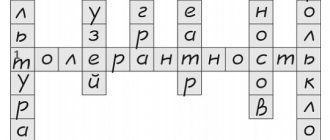Interactive presentation games in the educational process of preschool educational institutions
Elena Evgenievna Lazareva
Interactive presentation games in the educational process of preschool educational institutions
Modern teachers increasingly use information technology in their professional activities, and therefore we, preschool teachers, should adapt to the new information age.
Preschool age differs in psychophysiological age characteristics, individual (visual, auditory)
perception system, low degree of development of cognitive abilities, features of educational motivation.
Therefore, to increase cognitive activity in our work, we decided to use interactive presentation games . This form of work in the classroom arouses special interest and helps them better master the educational material. Over the course of the year, we tested interactive presentation games in our kindergarten.
In our opinion, this form of work was successful and today we want to share our experience. English word " interactive "
translates as
“to talk”
,
“to interact with someone”
.
Compared to active methods, interactive ones are focused not only on the general interaction of the teacher with preschoolers, but also on the interaction of children with each other. In interactive technology (
interactive presentation games ) , students act as full participants; their experience is no less important than the experience of the teacher, who not so much provides ready-made knowledge as encourages students to independently search and explore.
An interactive didactic game is a modern and recognized method of teaching and upbringing, which has such functions as educational , developmental and nurturing. In the process of such a game, the child develops perception, hand-eye coordination, imaginative thinking , cognitive motivation, voluntary memory and attention.
When compared with traditional forms of teaching preschoolers, information and communication technologies have a number of advantages:
— information on the screen in a playful form is understandable to preschoolers and arouses interest in educational activities ;
- effects that attract children;
- computer reward at the end of the game ;
- are of a research nature;
— develop a wide range of skills and understandings.
Interactive didactic games are divided into educational, controlling and generalizing.
• A game is considered educational if preschoolers, by participating in it, acquire new knowledge, skills and abilities ( “In the footsteps of the fairy-tale Hooligan”
,
“Playing with Masha”
(sounds,
“We’ll go to the forest to pick mushrooms”
,
“Help Little Red Riding Hood
collect flowers ” ,
“Arithmetic machine”
,
“Jolly hunter”
).
• Controlling is a game whose didactic purpose is to repeat, consolidate, and test previously acquired knowledge ( “Visiting a Fairy Tale”
,
“Help Dunno
collect the harvest ” ,
“Collect by color”
,
“Golden Autumn with Masha”
).
• Generalization games require knowledge integration . They contribute to the establishment of interdisciplinary connections and are aimed at acquiring the ability to act in various situations ( “Find the odd one out”
,
“Funny figures”
,
“Transport”
,
“Doctor Aibolit”
,
“Fix the toy”
).
The basic principles when working with interactive games are :
• availability;
• repeatability;
• relevance;
• collectivity;
• element of novelty.
When selecting games, we take into account a number of rules for educational and educational interactive games :
• objects on the screen are large in size and familiar to children;
• the text of the task is voiced by a speaker or an adult;
• tasks are interesting , understandable, easy to manage;
• compliance with age characteristics;
• entertaining;
• literate;
• creating situations of success;
• in a simple game form;
Our competence in information and computer technologies allows us to create our own games and presentations using preschool education . We use presentations in our educational activities according to the topics of calendar and thematic planning: “Where did the bread come to us from?”
,
“Migratory birds in spring”
,
“Victory Day”
,
“Military professions”
,
“Let’s talk about etiquette”
,
“Decorative and applied arts”
,
“Insects”
,
“Traffic light”
,
“Animals in spring”
,
“Wild animals of our region”
, etc.
We include interactive games educational areas as cognitive development (formation of a holistic picture of the world, cognitive development (formation of elementary mathematical concepts, artistic and aesthetic development (drawing, speech development.
It must be admitted that a computer is a new powerful tool for the intellectual development of children , but it must be remembered that its use for educational purposes in preschool institutions should be based on health-saving technologies. That's why we include in our games :
— finger exercises to prepare hand motor skills for work ( “Warm-up for fingers”
,
"Fun House"
);
— physical exercises, a set of physical exercises, relaxation with music to relieve muscle tension ( “Dance of the Little Ducklings”
,
“Smeshariki”
,
“About the Frog”
,
“Funny Bunnies”
);
- in the final part of the lesson, gymnastics for the eyes, to relieve visual tension ( “Gymnastics for the eyes with a drop”
,
“Gymnastics to strengthen the eye muscles”
,
“Lion and the Turtle”
,
“Chunga-Changa”
,
“Winnie the Pooh”
).
In addition, we, as teaching practitioners, must remember the sanitary rules and regulations for the use of ICT. According to SanPiN, when working at a computer, children should be placed at a distance of no closer than 2–3 m from the screen; classes using a computer for children 5–7 years old should be conducted no more than once a day. The duration of continuous work with a computer in classes for children 6-7 years old is 15 minutes.
In conclusion, I would like to highlight the positive aspects of using interactive presentation games . Children's cognitive activity and motivation increased, their knowledge expanded and systematized, preschoolers learned ways of practical activities using ICT.
To summarize, we suggest that the use of computer programs can become another effective way of developing knowledge in preschool children. However, no matter how positive and enormous potential information and communication technologies have, they cannot and should not replace live communication between a teacher and a child.
Literature:
1. “Game entertaining tasks for preschoolers”
. Z. A. Mikhailova.
2. Interactive games in preschool education . https://vospitateljam.ru/ispolzovanie-interaktivnyx-texnologij-v-doshkolnom-obrazovanii/
3. Pakhomov I.V., R.G. Prokdi Creating presentations in PowerPoint2010: - Moscow, Science and Technology, 2011 - 80 p.
4. Smolyaninova O. G. Multimedia in education (theoretical foundations and methods of use)
Krasnoyarsk, KrSU, 2003
5. https://pedsovet.org Collection of reports “ Educational ”






